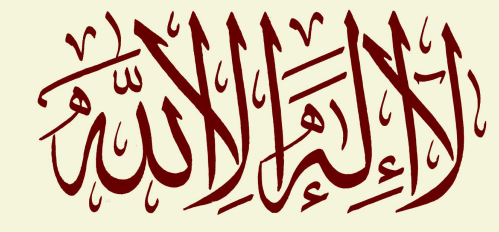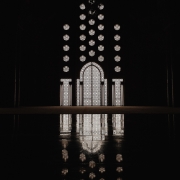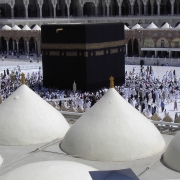“Fundamentalism”: A Metaphysical Perspective by M. Ali Lakhani
“Fundamentalism”: A Metaphysical Perspective
by M. Ali Lakhani
“…In religion,
What damned error, but some sober brow
Will bless it and approve it with a text,
Hiding the grossness with fair ornament?”
William Shakespeare, The Merchant of Venice, III.ii.77
History is replete with examples of those who have desacrated and degraded religion, sadly and ironically in the name of religion itself. Wars, massacres, persecutions, and the destruction of sacred works of art, have all been sanctioned by religious authorities throughout recorded history, fueling skepticism about the legitimacy, and claims to moral authority, of traditional religion. The infamy in history of the Crusades or the Inquisition, or more contemporary examples such as the demolition of Babri Masjid or the Bamiyan Buddha, and countless political wars rooted in religious differences—including the more recent turmoils in the Middle East, the Balkans, Northern Ireland and Sri Lanka—all add to the evidence of the skeptics. But these actions, many of which are forced to wear the badge of religion, are in fact defamatory of authentic religion. We must be careful not to reject an authentic tradition on account of those abuses and violations perpetrated by its counterfeit in its name. Not every act done in the name of religion is in fact true to its spirit. It is therefore necessary to distinguish between genuine religion and its counterfeit, between the “fundamentals” of a religion and the “fundamentalist” offences committed in its name.
The term “fundamentalism”, however, is anomalous and its usage fraught with difficulty. Though one can speak of many types of “fundamentalism” (for example, political, economic or scientific), the term is primarily associated with religion. In the context of religion, the term was originally applied to an early 20th Century Christian revivalist group known as the “Fundamentalist Movement”, whose views were characterized by religious rigidity and evangelism, but in recent years, particularly dating to the time of the Iranian Revolution in the late 1970s, the term has come to be extended to other religions, so that one now speaks, for example, of Sikh, Hindu, Buddhist, Christian or Muslim “fundamentalists”. The term has come to be laden with connotations of political and religious extremism or militancy, which the media frequently labels as “terrorism” (one is reminded here of the comment by Robert Fisk that terrorism is in fact “a political contrivance. ‘Terrorists’ are those who use violence against the side that is using the word.”). This is particularly true in the case of Islam, which has been demonized in the aftermath of the Cold War and the fall of the Soviet Union, by being depicted as a threat to modern American civilization by writers within the dominant media, such as the influential Samuel P. Huntington for whom this portrayal was an important component to his thesis of the “clash of civilizations”. The deconstruction of the media’s portrayal of religious (particularly so-called Islamic) “fundamentalism” in the West by writers such as Edward Said has yielded important insights. The language employed by the dominant media reveals its own biases. It is selective to brand, for instance, a veiled Muslim woman as an “Islamic fundamentalist”, falsely implying that she would condone violence carried out in the name of her religion, while avoiding the term altogether in the case of the Jewish settler who guns down worshipers in a mosque in Hebron, or a Catholic car-bomber in Belfast, or a Protestant extremist who detonates a bomb killing innocent civilians in Oklahoma. “Fundamentalism” is a term that disguises a host of complexities. It reflects the dominant culture’s modernist bias towards secularism and individualism, which are largely rejected by the traditional cultures that it labels as “fundamentalist”. And it ignores the nuances that reflect the complexities underlying what it labels as “fundamentalism”. What, for instance, does the term reveal when applied equally to the Taliban’s desacration of Buddhist artefacts and to the Iranian government who opposed that desacration? It is far too simplistic to understand the term to refer merely to the monolithic culture of religious violence that is commonly denoted by its use within the dominant media. One has to seek a deeper understanding of the term.
This editorial proposes a definition of religious “fundamentalism” from the perspective of traditional metaphysics. There are two features that distinguish “fundamentalism” in this definition: in its inward aspect, though not synonymous with the formal, it is formalistic to the point where the “spirit” of religion is sacrificed to its “letter”; and in its outward aspect, though not synonymous with the exclusive, it is exclusivist to the point where it denies any religious pluralism premised on transcendent unity. Each of these aspects needs elaboration.
To understand how the inward aspect of authentic religion differs from that of “fundamentalism” as defined here, a starting point is perhaps to consider the object of religion. Faced with the mysteries of existence and death, humanity has sought throughout history to understand the nature of reality and existential meaning. All authentic religion, premised on the transcendental origin and end of reality, holds that human beings may, by the grace of revelation and intellection, discern the underlying unity and integrity of reality which is embedded within our very selves, and that such knowledge, where it permeates our being, is transformative, unitive and salvific. It is the spiritual ground of reality, realized in us, that imbues us with a sense of the sacred, transforming our perception of manifest reality into a theophany in which we participate, not as separate creatures but as the Divine Self, the Eternal Witness, the only Existent. This is the inward aspect of religion, its heart or core. Considered from this standpoint, the object of religion is an alchemical transformation that corresponds in all religious lexicons to an intrinsic beauty or virtue that radiates as compassionate piety. This piety expresses itself in a sacred relationship between humanity, as Trustee, and the theophanic creation, as Beneficiary, whose spiritual radiance we, as transcendent beings, are privileged to both witness and express. This notion of piety and its concomitant obligation of stewardship—in Qur’anic terminology, Amanah or the Divine Trust—are in fact far removed from the dry formalism of “fundamentalism”. It is important to note, however, that this definition does not reduce fundamentalism to exoterism. In all authentic religions, form is a necessary component of tradition, celebrated in its scriptures, rituals and liturgies. It is not the adherence to these forms, but the loss of their kardial significance, that is indicative of fundamentalism. Formalism, in the sense of deracinated religion, is the inward gaze of fundamentalism.
To understand how the outward aspect of authentic religion differs from that of “fundamentalism” as defined here, we note that religion as such admits of two approaches to the Divine: as Truth and as Presence. The first stresses the transcendence of Absolute reality, the Supreme Principle, and approaches the Divine through Knowledge. The second stresses the immanence of Infinite reality, the manifest Self, and approaches the Divine through Love. Outwardly, these approaches may sometimes appear to clash, but inwardly they are perfectly compatible. Truth is the transcendent aspect of Presence, and Presence is the immanent aspect of Truth. These polarities are in fact complements of each other, and no religious conception of the Divine is complete without including both. In Islam, for example, this is one of the central meanings of the principle of tawhid. While an authentic religious tradition may emphasize one approach to the Divine over another (for example, Judaism and Islam will generally favor Truth over Presence and are therefore iconoclastic in matters of artistic expression, while Hinduism, Buddhism and Christianity will generally favor Presence over Truth, and are therefore iconodulic), it will not do so at the expense of religious pluralism. The commitment to a particular religious tradition, while entailing subscription to its creed and submission to its forms of worship, does not mandate the rejection of other genuine religious approaches. The infinity of Divine expression, and the consequent diversity of religious typologies, are dictated by the very structure of reality itself, whose transcendent and esoteric unity are the underlying foundations of its pluralism. The rejection of such pluralism is the outward gaze of fundamentalism.
From this it can be seen that “fundamentalism”, as the term is defined here, is a form of reductionism—the “spirit” reduced to the “letter”, multiple expressions of Truth reduced to one. But, it may be objected, surely all orthodox doctrines are reductionist by virtue of their very orthodoxy. And here it becomes important to distinguish between “orthodoxy”—or “right thinking” according to the doctrines and principles of traditional metaphysics—and “fundamentalism”. Where fundamentalism isolates or ignores aspects of reality, mistaking the part for the whole, orthodoxy, by contrast—though it may emphasize a particular part—views reality as a whole, embracing all its aspects. These aspects, though they may appear to be opposed, are reconciled and accommodated within the traditional “principle of complementarity”, which regards reality as a synthesis of polarities, a coincidentia oppositorum. To claim that orthodoxy amounts to reductionism is to fail to perceive any distinction between dogma (the necessary component of doctrine—necessary as a corollary of transcendence) and dogmatism (the fallacy of doctrine, deriving from its reductionist tendency). This is one of the errors of post-modernist deconstructionism.
But traditional orthodoxy is not itself immune from a tendency to reductionism. There are many diverse expressions of Truth, which are potentially salvific or redemptive in content, though these may sometimes appear to be orthodoxly unsound from the point of view of a particular tradition, or even from within the same tradition. Thus, it is as erroneous to claim that “Pure Consciousness cannot say ‘I’” (Sri Ramana Maharshi) as to claim “I am the Truth” (al-Hallaj). Either both these statements are true, or neither is. Not only “I am in the Father” but also “the Father is in me”. Or again, not only La illaha but also illa’llah. God cannot be reduced to an aspect of reality, though every aspect of reality is an aspect of God—because God is absolute reality. Similarly, orthodoxy cannot be reduced to a “zero-sum” view of reality. Truth, in the end, must embrace all gradations within reality, though these may be ordered hierarchically. Any expression of reality that falls short of the Absolute, Unconditioned, Supreme Principle is nonetheless an aspect of reality, on pain of denying that the Absolute is also Infinite. Yet it is not Reality itself, on pain of denying that Reality is hierarchically transcendent. Orthodoxy cannot be so rigorous as to deny, in the name of Truth, the humanity of man—notwithstanding his potential divinity; just as it cannot reject that potential in the face of the imperfections of man. This then is the challenge of traditional orthodoxy: to avoid the tendency to reduce a particular doctrine—which may be an aspect of Truth—to Truth itself; or to reduce Truth to an abstraction that devalues or denies the experiential reality of Presence.









